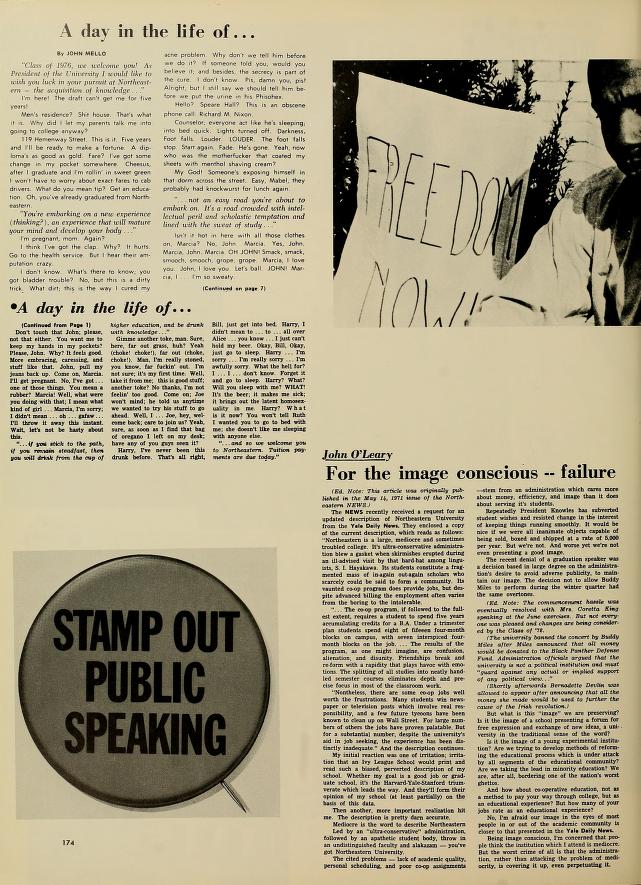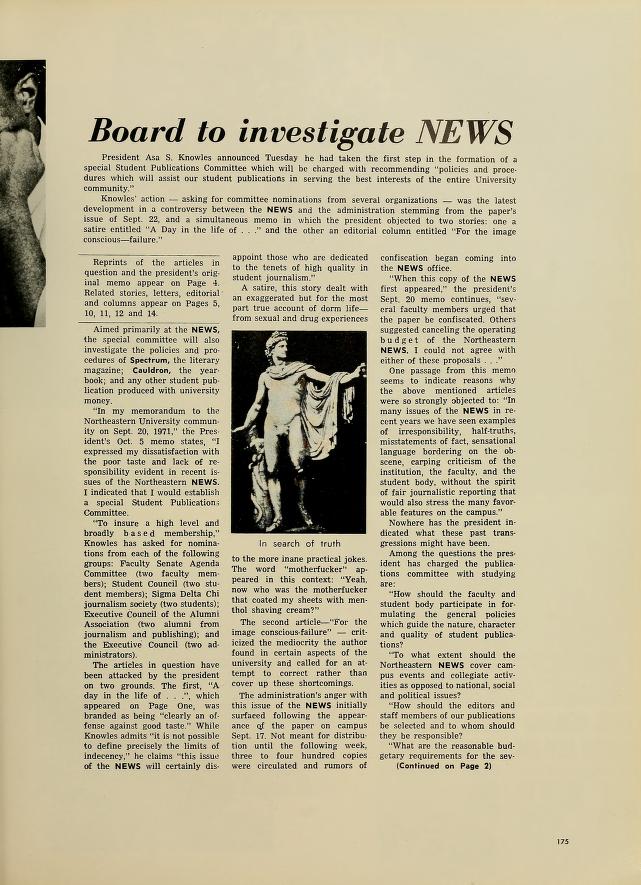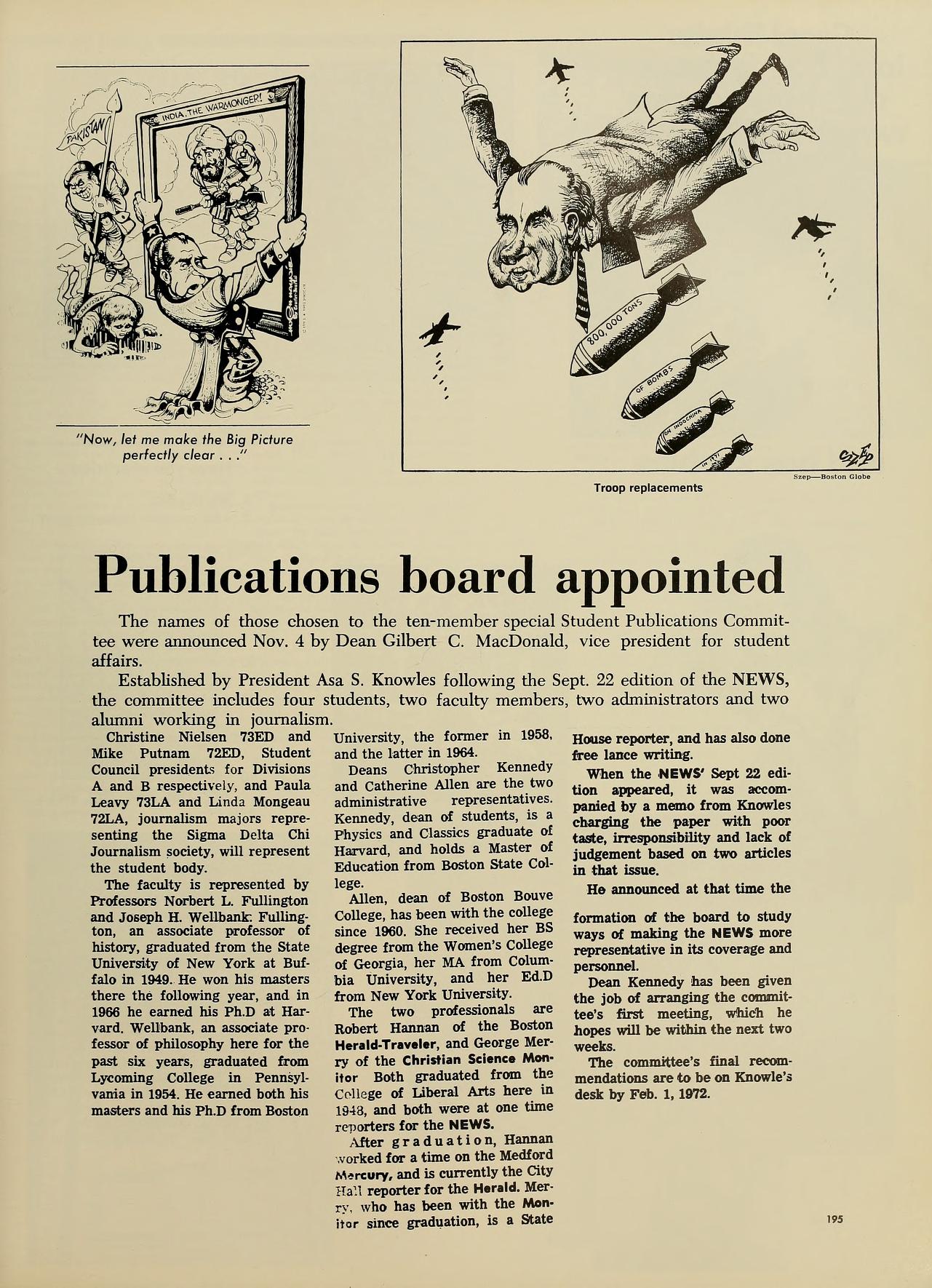Final Protests: September 1971-May 1972
2023-05-12T19:07:57Z
A
CoreFile
neu:205284
{"datastreams":{"RELS-EXT":{"dsLabel":"Fedora Object-to-Object Relationship Metadata","dsVersionID":"RELS-EXT.2","dsCreateDate":"2014-11-10T21:46:07Z","dsState":"A","dsMIME":"application/rdf+xml","dsFormatURI":null,"dsControlGroup":"X","dsSize":417,"dsVersionable":true,"dsInfoType":null,"dsLocation":"neu:205284+RELS-EXT+RELS-EXT.2","dsLocationType":null,"dsChecksumType":"DISABLED","dsChecksum":"none"},"rightsMetadata":{"dsLabel":"Rights Metadata","dsVersionID":"rightsMetadata.4","dsCreateDate":"2015-01-20T02:45:36Z","dsState":"A","dsMIME":"text/xml","dsFormatURI":null,"dsControlGroup":"M","dsSize":502,"dsVersionable":true,"dsInfoType":null,"dsLocation":"neu:205284+rightsMetadata+rightsMetadata.4","dsLocationType":"INTERNAL_ID","dsChecksumType":"DISABLED","dsChecksum":"none"},"DC":{"dsLabel":"Dublin Core Record for this object","dsVersionID":"DC.9","dsCreateDate":"2023-05-12T19:07:57Z","dsState":"A","dsMIME":"text/xml","dsFormatURI":"http://www.openarchives.org/OAI/2.0/oai_dc/","dsControlGroup":"X","dsSize":2925,"dsVersionable":true,"dsInfoType":null,"dsLocation":"neu:205284+DC+DC.9","dsLocationType":null,"dsChecksumType":"DISABLED","dsChecksum":"none"},"properties":{"dsLabel":"Properties","dsVersionID":"properties.3","dsCreateDate":"2015-01-19T16:07:42Z","dsState":"A","dsMIME":"text/xml","dsFormatURI":null,"dsControlGroup":"M","dsSize":677,"dsVersionable":true,"dsInfoType":null,"dsLocation":"neu:205284+properties+properties.3","dsLocationType":"INTERNAL_ID","dsChecksumType":"DISABLED","dsChecksum":"none"},"mods":{"dsLabel":"Bibliographic Metadata","dsVersionID":"mods.13","dsCreateDate":"2023-05-12T19:07:57Z","dsState":"A","dsMIME":"text/xml","dsFormatURI":null,"dsControlGroup":"M","dsSize":6005,"dsVersionable":true,"dsInfoType":null,"dsLocation":"neu:205284+mods+mods.13","dsLocationType":"INTERNAL_ID","dsChecksumType":"DISABLED","dsChecksum":"none"}},"objLabel":"168150","objOwnerId":"fedoraAdmin","objModels":["info:fedora/fedora-system:FedoraObject-3.0","info:fedora/afmodel:CoreFile"],"objCreateDate":"2014-11-04T05:41:54Z","objLastModDate":"2023-05-12T19:07:57Z","objDissIndexViewURL":"http://localhost:8080/fedora/objects/neu%3A205284/methods/fedora-system%3A3/viewMethodIndex","objItemIndexViewURL":"http://localhost:8080/fedora/objects/neu%3A205284/methods/fedora-system%3A3/viewItemIndex","objState":"A"}
northeastern:drs:repository:staff
northeastern:drs:library:archives
public
000000000
000000000
neu:6012
neu:6012
000000000
000000000
/downloads/neu:205285?datastream_id=thumbnail_1
/downloads/neu:205285?datastream_id=thumbnail_2
/downloads/neu:205285?datastream_id=thumbnail_3
/downloads/neu:205285?datastream_id=thumbnail_4
/downloads/neu:205285?datastream_id=thumbnail_5
/downloads/neu:205285?datastream_id=thumbnail_1
/downloads/neu:205285?datastream_id=thumbnail_2
/downloads/neu:205285?datastream_id=thumbnail_3
/downloads/neu:205285?datastream_id=thumbnail_4
/downloads/neu:205285?datastream_id=thumbnail_5
ImageMasterFile
ImageMasterFile
neu:6012
000000000
/downloads/neu:205285?datastream_id=thumbnail_1
/downloads/neu:205285?datastream_id=thumbnail_2
/downloads/neu:205285?datastream_id=thumbnail_3
/downloads/neu:205285?datastream_id=thumbnail_4
/downloads/neu:205285?datastream_id=thumbnail_5
ImageMasterFile
Four men talking around a table in an office, probably connected with the Northeastern News
Four men talking around a table in an office, probably connected with the Northeastern News
Four men talking around a table in an office, probably connected with the Northeastern News
Four men talking around a table in an office, probably connected with the Northeastern News
photographs
1970
1970
Selected resources in this collection were acquired through transferals from Northeastern's Office of University Photography, Jet Commercial Photographers, Northeastern University publications, unprocessed archival collections and other contract photographers.
Collection finding aid: https://archivesspace.library.northeastern.edu/repositories/2/resources/761
Northeastern University (Boston, Mass.)
Northeastern University (Boston, Mass.) Northeastern News
Northeastern University (Boston, Mass.)
Northeastern University (Boston, Mass.)
Northeastern University (Boston, Mass.)
Northeastern University (Boston, Mass.)
Northeastern News
Northeastern University (Boston, Mass.)
Northeastern University (Boston, Mass.)
Massachusetts
Boston
Massachusetts
Boston
Massachusetts
Boston
Massachusetts
Boston
Massachusetts
Boston
College students
Newspapers
Student activities
Student newspapers and periodicals
Students
College students
Massachusetts
Boston
Newspapers
Massachusetts
Boston
Student activities
Massachusetts
Boston
Student newspapers and periodicals
Northeastern University (Boston, Mass.) Northeastern News
Northeastern University (Boston, Mass.)
Northeastern News
Students
Northeastern University (Boston, Mass.)
Northeastern University (Boston, Mass.)
http://hdl.handle.net/2047/d20167877
A028409
http://hdl.handle.net/2047/d20167877
College students
Newspapers
Student activities
Student newspapers and periodicals
Students
Four men talking around a table in an office, probably connected with the Northeastern News
Northeastern University Photograph collection (A103)
Series 15: Student Life. Subseries: Activities > "Northeastern University News"
Four men talking around a table in an office, probably connected with the Northeastern News
four men talking around a table in an office probably connected with the northeastern news
1970/01/01
approximate
Four men talking around a table in an office, probably connected with the Northeastern News
1970
Northeastern University (Boston, Mass.)
College students Massachusetts Boston
Newspapers Massachusetts Boston
Student activities Massachusetts Boston
Student newspapers and periodicals Massachusetts Boston
Northeastern University (Boston, Mass.) Northeastern News
Northeastern University (Boston, Mass.) Students
info:fedora/afmodel:CoreFile
info:fedora/neu:6012
2023-05-12T19:08:49.039Z
The last major campus anti-War protest occurred in May 1972. Students attended an unprecedented meeting with the Board of Trustees regarding the future of ROTC on campus. Frustrated by the Board’s reactions, a number of students staged a sit-in at the Bursar’s office that afternoon. Several were arrested, including the National Secretary of the SDS who had no affiliation with Northeastern. Three more were arrested that evening, after a group broke into Richards Hall and chained the door from the inside. Following the occupation, about 350 people began marching towards ROTC headquarters, but dispersed around 12:30 a.m. when faced with Boston Police vehicles at the Greenleaf Building.
The next day, students marched and chanted through several buildings, demanding amnesty for the arrested protestors. When Dean Kennedy thwarted these pleas, about 40 students moved to the President’s Office and an open meeting was held in the Lounge. In a final, radical effort to persuade the administration, students gave the following demands: an immediate end to the War, an end to all University complicity in the War, amnesty for those arrested, the cancellation of ROTC and replacement of its scholarships with University ones, and the conversion of the Greenleaf Building into a daycare center. After years of reform discussions, the Board of Trustees had the final say when they voted unanimously that Northeastern’s ROTC program would remain unchanged.
2023-05-11T18:32:20Z
A
CoreFile
neu:181710
{"datastreams":{"RELS-EXT":{"dsLabel":"Fedora Object-to-Object Relationship Metadata","dsVersionID":"RELS-EXT.2","dsCreateDate":"2014-11-10T21:43:27Z","dsState":"A","dsMIME":"application/rdf+xml","dsFormatURI":null,"dsControlGroup":"X","dsSize":417,"dsVersionable":true,"dsInfoType":null,"dsLocation":"neu:181710+RELS-EXT+RELS-EXT.2","dsLocationType":null,"dsChecksumType":"DISABLED","dsChecksum":"none"},"rightsMetadata":{"dsLabel":"Rights Metadata","dsVersionID":"rightsMetadata.4","dsCreateDate":"2015-01-20T02:38:51Z","dsState":"A","dsMIME":"text/xml","dsFormatURI":null,"dsControlGroup":"M","dsSize":502,"dsVersionable":true,"dsInfoType":null,"dsLocation":"neu:181710+rightsMetadata+rightsMetadata.4","dsLocationType":"INTERNAL_ID","dsChecksumType":"DISABLED","dsChecksum":"none"},"DC":{"dsLabel":"Dublin Core Record for this object","dsVersionID":"DC.11","dsCreateDate":"2023-05-11T18:32:20Z","dsState":"A","dsMIME":"text/xml","dsFormatURI":"http://www.openarchives.org/OAI/2.0/oai_dc/","dsControlGroup":"X","dsSize":3042,"dsVersionable":true,"dsInfoType":null,"dsLocation":"neu:181710+DC+DC.11","dsLocationType":null,"dsChecksumType":"DISABLED","dsChecksum":"none"},"properties":{"dsLabel":"Properties","dsVersionID":"properties.3","dsCreateDate":"2015-01-19T15:55:58Z","dsState":"A","dsMIME":"text/xml","dsFormatURI":null,"dsControlGroup":"M","dsSize":677,"dsVersionable":true,"dsInfoType":null,"dsLocation":"neu:181710+properties+properties.3","dsLocationType":"INTERNAL_ID","dsChecksumType":"DISABLED","dsChecksum":"none"},"mods":{"dsLabel":"Bibliographic Metadata","dsVersionID":"mods.14","dsCreateDate":"2023-05-11T18:32:20Z","dsState":"A","dsMIME":"text/xml","dsFormatURI":null,"dsControlGroup":"M","dsSize":6808,"dsVersionable":true,"dsInfoType":null,"dsLocation":"neu:181710+mods+mods.14","dsLocationType":"INTERNAL_ID","dsChecksumType":"DISABLED","dsChecksum":"none"}},"objLabel":"143958","objOwnerId":"fedoraAdmin","objModels":["info:fedora/fedora-system:FedoraObject-3.0","info:fedora/afmodel:CoreFile"],"objCreateDate":"2014-11-04T05:38:40Z","objLastModDate":"2023-05-11T18:32:20Z","objDissIndexViewURL":"http://localhost:8080/fedora/objects/neu%3A181710/methods/fedora-system%3A3/viewMethodIndex","objItemIndexViewURL":"http://localhost:8080/fedora/objects/neu%3A181710/methods/fedora-system%3A3/viewItemIndex","objState":"A"}
northeastern:drs:repository:staff
northeastern:drs:library:archives
public
000000000
000000000
neu:6012
neu:6012
000000000
000000000
/downloads/neu:181711?datastream_id=thumbnail_1
/downloads/neu:181711?datastream_id=thumbnail_2
/downloads/neu:181711?datastream_id=thumbnail_3
/downloads/neu:181711?datastream_id=thumbnail_4
/downloads/neu:181711?datastream_id=thumbnail_5
/downloads/neu:181711?datastream_id=thumbnail_1
/downloads/neu:181711?datastream_id=thumbnail_2
/downloads/neu:181711?datastream_id=thumbnail_3
/downloads/neu:181711?datastream_id=thumbnail_4
/downloads/neu:181711?datastream_id=thumbnail_5
ImageMasterFile
ImageMasterFile
neu:6012
000000000
/downloads/neu:181711?datastream_id=thumbnail_1
/downloads/neu:181711?datastream_id=thumbnail_2
/downloads/neu:181711?datastream_id=thumbnail_3
/downloads/neu:181711?datastream_id=thumbnail_4
/downloads/neu:181711?datastream_id=thumbnail_5
ImageMasterFile
ROTC cadets in a tank during a field exercise
ROTC cadets in a tank during a field exercise
ROTC cadets in a tank during a field exercise
ROTC cadets in a tank during a field exercise
Two male cadets, center, operate a tank during a ROTC field exercise. Other cadets can be seen, left. On back: "Cadet Randy Lively - 2nd from left. Major: Political Science. Cadet Alan Beauchamp - center with glasses. Major: Accounting."
Photographer
Photographer
photographs
1972-07-13
1972-07-13
Northeastern University (Boston, Mass.). Office of University Photography.
Selected resources in this collection were acquired through transferals from Northeastern's Office of University Photography, Jet Commercial Photographers, Northeastern University publications, unprocessed archival collections and other contract photographers.
Collection finding aid: https://archivesspace.library.northeastern.edu/repositories/2/resources/761
Northeastern University (Boston, Mass.)
Northeastern University (Boston, Mass.)
Northeastern University (Boston, Mass.) Reserve Officers' Training Corps
United States Army Reserve Officers' Training Corps
Beauchamp Alan J.
Northeastern University (Boston, Mass.)
Northeastern University (Boston, Mass.)
Northeastern University (Boston, Mass.)
Northeastern University (Boston, Mass.)
Reserve Officers' Training Corps
United States
Army
Reserve Officers' Training Corps
Northeastern University (Boston, Mass.)
Massachusetts
Boston
United States
Massachusetts
Boston
College students
Tanks (Military science)
Students
College students
United States
Tanks (Military science)
Students
Northeastern University (Boston, Mass.)
Northeastern University (Boston, Mass.)
Northeastern University (Boston, Mass.) Reserve Officers' Training Corps
Northeastern University (Boston, Mass.)
Reserve Officers' Training Corps
United States Army Reserve Officers' Training Corps
United States
Army
Reserve Officers' Training Corps
Beauchamp Alan J.
http://hdl.handle.net/2047/d20163165
A000236
http://hdl.handle.net/2047/d20163165
College students
Tanks (Military science)
Students
ROTC cadets in a tank during a field exercise
Northeastern University Photograph collection (A103)
Series 13: ROTC. Subseries: Field Exercises > n.d., 1966-1972
ROTC cadets in a tank during a field exercise
rotc cadets in a tank during a field exercise
1972/07/13
ROTC cadets in a tank during a field exercise
1972-07-13
Northeastern University (Boston, Mass.)
College students Massachusetts Boston
Tanks (Military science) United States
Northeastern University (Boston, Mass.) Students
Northeastern University (Boston, Mass.) Reserve Officers' Training Corps
United States Army Reserve Officers' Training Corps
Beauchamp Alan J.
Babcock, David R.
Babcock, David R.
Babcock, David R.
info:fedora/afmodel:CoreFile
info:fedora/neu:6012
2023-05-11T18:45:21.9Z
2023-05-11T19:09:56Z
A
CoreFile
neu:183454
{"datastreams":{"RELS-EXT":{"dsLabel":"Fedora Object-to-Object Relationship Metadata","dsVersionID":"RELS-EXT.2","dsCreateDate":"2014-11-10T21:43:40Z","dsState":"A","dsMIME":"application/rdf+xml","dsFormatURI":null,"dsControlGroup":"X","dsSize":417,"dsVersionable":true,"dsInfoType":null,"dsLocation":"neu:183454+RELS-EXT+RELS-EXT.2","dsLocationType":null,"dsChecksumType":"DISABLED","dsChecksum":"none"},"rightsMetadata":{"dsLabel":"Rights Metadata","dsVersionID":"rightsMetadata.4","dsCreateDate":"2015-01-20T02:39:21Z","dsState":"A","dsMIME":"text/xml","dsFormatURI":null,"dsControlGroup":"M","dsSize":502,"dsVersionable":true,"dsInfoType":null,"dsLocation":"neu:183454+rightsMetadata+rightsMetadata.4","dsLocationType":"INTERNAL_ID","dsChecksumType":"DISABLED","dsChecksum":"none"},"DC":{"dsLabel":"Dublin Core Record for this object","dsVersionID":"DC.11","dsCreateDate":"2023-05-11T19:09:56Z","dsState":"A","dsMIME":"text/xml","dsFormatURI":"http://www.openarchives.org/OAI/2.0/oai_dc/","dsControlGroup":"X","dsSize":2902,"dsVersionable":true,"dsInfoType":null,"dsLocation":"neu:183454+DC+DC.11","dsLocationType":null,"dsChecksumType":"DISABLED","dsChecksum":"none"},"properties":{"dsLabel":"Properties","dsVersionID":"properties.3","dsCreateDate":"2015-01-19T15:56:50Z","dsState":"A","dsMIME":"text/xml","dsFormatURI":null,"dsControlGroup":"M","dsSize":677,"dsVersionable":true,"dsInfoType":null,"dsLocation":"neu:183454+properties+properties.3","dsLocationType":"INTERNAL_ID","dsChecksumType":"DISABLED","dsChecksum":"none"},"mods":{"dsLabel":"Bibliographic Metadata","dsVersionID":"mods.13","dsCreateDate":"2023-05-11T19:09:50Z","dsState":"A","dsMIME":"text/xml","dsFormatURI":null,"dsControlGroup":"M","dsSize":6306,"dsVersionable":true,"dsInfoType":null,"dsLocation":"neu:183454+mods+mods.13","dsLocationType":"INTERNAL_ID","dsChecksumType":"DISABLED","dsChecksum":"none"}},"objLabel":"144828","objOwnerId":"fedoraAdmin","objModels":["info:fedora/fedora-system:FedoraObject-3.0","info:fedora/afmodel:CoreFile"],"objCreateDate":"2014-11-04T05:38:58Z","objLastModDate":"2023-05-11T19:09:56Z","objDissIndexViewURL":"http://localhost:8080/fedora/objects/neu%3A183454/methods/fedora-system%3A3/viewMethodIndex","objItemIndexViewURL":"http://localhost:8080/fedora/objects/neu%3A183454/methods/fedora-system%3A3/viewItemIndex","objState":"A"}
northeastern:drs:repository:staff
northeastern:drs:library:archives
public
000000000
000000000
neu:6012
neu:6012
000000000
000000000
/downloads/neu:183455?datastream_id=thumbnail_1
/downloads/neu:183455?datastream_id=thumbnail_2
/downloads/neu:183455?datastream_id=thumbnail_3
/downloads/neu:183455?datastream_id=thumbnail_4
/downloads/neu:183455?datastream_id=thumbnail_5
/downloads/neu:183455?datastream_id=thumbnail_1
/downloads/neu:183455?datastream_id=thumbnail_2
/downloads/neu:183455?datastream_id=thumbnail_3
/downloads/neu:183455?datastream_id=thumbnail_4
/downloads/neu:183455?datastream_id=thumbnail_5
ImageMasterFile
ImageMasterFile
neu:6012
000000000
/downloads/neu:183455?datastream_id=thumbnail_1
/downloads/neu:183455?datastream_id=thumbnail_2
/downloads/neu:183455?datastream_id=thumbnail_3
/downloads/neu:183455?datastream_id=thumbnail_4
/downloads/neu:183455?datastream_id=thumbnail_5
ImageMasterFile
Two female ROTC cadets in the armory
Two female ROTC cadets in the armory
Two female ROTC cadets in the armory
Two female ROTC cadets in the armory
Jet Commercial Photographers (Boston, Mass.)
Jet Commercial Photographers (Boston, Mass.)
Photographer
Photographer
photographs
1973-11-09
1973-11-09
Jet Commercial Photographers.
Selected resources in this collection were acquired through transferals from Northeastern's Office of University Photography, Jet Commercial Photographers, Northeastern University publications, unprocessed archival collections and other contract photographers.
Collection finding aid: https://archivesspace.library.northeastern.edu/repositories/2/resources/761
Northeastern University (Boston, Mass.)
Northeastern University (Boston, Mass.) Reserve Officers' Training Corps
United States Army Reserve Officers' Training Corps
Northeastern University (Boston, Mass.)
Northeastern University (Boston, Mass.)
Northeastern University (Boston, Mass.)
Reserve Officers' Training Corps
United States
Army
Reserve Officers' Training Corps
Northeastern University (Boston, Mass.)
Massachusetts
Boston
Massachusetts
Massachusetts
Boston
Massachusetts
Boston
College students
Firearms
Military education
Women college students
College students
Firearms
Massachusetts
Military education
Massachusetts
Boston
Women college students
Northeastern University (Boston, Mass.) Reserve Officers' Training Corps
Northeastern University (Boston, Mass.)
Reserve Officers' Training Corps
United States Army Reserve Officers' Training Corps
United States
Army
Reserve Officers' Training Corps
http://hdl.handle.net/2047/d20163514
A000435
http://hdl.handle.net/2047/d20163514
College students
Firearms
Military education
Women college students
Two female ROTC cadets in the armory
Northeastern University Photograph collection (A103)
Jet Commercial Photographers negatives (A60)
Two female ROTC cadets in the armory
two female rotc cadets in the armory
1973/11/09
Two female ROTC cadets in the armory
1973-11-09
Northeastern University (Boston, Mass.)
College students Massachusetts Boston
Firearms
Military education Massachusetts
Women college students Massachusetts Boston
Northeastern University (Boston, Mass.) Reserve Officers' Training Corps
United States Army Reserve Officers' Training Corps
Jet Commercial Photographers (Boston, Mass.)
Jet Commercial Photographers (Boston, Mass.)
info:fedora/afmodel:CoreFile
info:fedora/neu:6012
2023-05-11T19:16:29.364Z
As anti-War activism came to an end, other movements on campus continued. Throughout the early 1970s, African-American students continued to hold the administration accountable to their Thirteen Demands, advocating for the development of the African-American Institute, Department of African American Studies, and the Affirmative Action Office. These students organized celebrations like Black History Week, and protests like the financial aid sit-in of May 1971. Some students focused on racial inequality in the Boston public schools: on March 14, 1972, the NAACP filed a class action lawsuit against the Boston School Committee, eventually leading to the desegregation busing crisis that consumed the city’s attention throughout the mid-1970s.
Meanwhile the country saw a period of federal instability, when the 1973 Watergate hearings led to the impeachment of President Nixon. Changes to the Northeastern administration and elected body were also underway. In 1973, the Student Council dissolved and rebuilt itself as the Student Federation, which would eventually become the Student Government Association. After overseeing the completion of the Diamond Anniversary Development Program, Asa S. Knowles resigned from his Presidency position and was appointed Chancellor in 1975. On April 29-30 of that same year, the U.S. evacuated nearly all of its remaining troops and civilians from Saigon in Operation Frequent Wind. The city was then captured by the National Liberation Front of South Vietnam and the People’s Army of Vietnam, marking the end of the War and beginning of Vietnam’s reunification.
2023-05-18T17:11:38Z
A
CoreFile
neu:cj82nr42x
{"datastreams":{"RELS-EXT":{"dsLabel":"Fedora Object-to-Object Relationship Metadata","dsVersionID":"RELS-EXT.1","dsCreateDate":"2016-10-27T17:26:58Z","dsState":"A","dsMIME":"application/rdf+xml","dsFormatURI":null,"dsControlGroup":"X","dsSize":420,"dsVersionable":true,"dsInfoType":null,"dsLocation":"neu:cj82nr42x+RELS-EXT+RELS-EXT.1","dsLocationType":null,"dsChecksumType":"DISABLED","dsChecksum":"none"},"rightsMetadata":{"dsLabel":null,"dsVersionID":"rightsMetadata.2","dsCreateDate":"2016-10-27T17:30:18Z","dsState":"A","dsMIME":"text/xml","dsFormatURI":null,"dsControlGroup":"M","dsSize":639,"dsVersionable":true,"dsInfoType":null,"dsLocation":"neu:cj82nr42x+rightsMetadata+rightsMetadata.2","dsLocationType":"INTERNAL_ID","dsChecksumType":"DISABLED","dsChecksum":"none"},"DC":{"dsLabel":"Dublin Core Record for this object","dsVersionID":"DC.9","dsCreateDate":"2023-05-18T17:11:38Z","dsState":"A","dsMIME":"text/xml","dsFormatURI":"http://www.openarchives.org/OAI/2.0/oai_dc/","dsControlGroup":"X","dsSize":2031,"dsVersionable":true,"dsInfoType":null,"dsLocation":"neu:cj82nr42x+DC+DC.9","dsLocationType":null,"dsChecksumType":"DISABLED","dsChecksum":"none"},"properties":{"dsLabel":null,"dsVersionID":"properties.5","dsCreateDate":"2016-10-27T17:30:39Z","dsState":"A","dsMIME":"text/xml","dsFormatURI":null,"dsControlGroup":"M","dsSize":696,"dsVersionable":true,"dsInfoType":null,"dsLocation":"neu:cj82nr42x+properties+properties.5","dsLocationType":"INTERNAL_ID","dsChecksumType":"DISABLED","dsChecksum":"none"},"mods":{"dsLabel":null,"dsVersionID":"mods.8","dsCreateDate":"2023-05-18T17:11:37Z","dsState":"A","dsMIME":"text/xml","dsFormatURI":null,"dsControlGroup":"M","dsSize":4663,"dsVersionable":true,"dsInfoType":null,"dsLocation":"neu:cj82nr42x+mods+mods.8","dsLocationType":"INTERNAL_ID","dsChecksumType":"DISABLED","dsChecksum":"none"}},"objLabel":null,"objOwnerId":"fedoraAdmin","objModels":["info:fedora/fedora-system:FedoraObject-3.0","info:fedora/afmodel:CoreFile"],"objCreateDate":"2016-10-27T17:26:56Z","objLastModDate":"2023-05-18T17:11:38Z","objDissIndexViewURL":"http://localhost:8080/fedora/objects/neu%3Acj82nr42x/methods/fedora-system%3A3/viewMethodIndex","objItemIndexViewURL":"http://localhost:8080/fedora/objects/neu%3Acj82nr42x/methods/fedora-system%3A3/viewItemIndex","objState":"A"}
northeastern:drs:repository:staff
public
001614785
neu:6012
neu:6012
001614785
001614785
/downloads/neu:m040s258t?datastream_id=thumbnail_1
/downloads/neu:m040s258t?datastream_id=thumbnail_2
/downloads/neu:m040s258t?datastream_id=thumbnail_3
/downloads/neu:m040s258t?datastream_id=thumbnail_4
/downloads/neu:m040s258t?datastream_id=thumbnail_5
/downloads/neu:m040s258t?datastream_id=thumbnail_1
/downloads/neu:m040s258t?datastream_id=thumbnail_2
/downloads/neu:m040s258t?datastream_id=thumbnail_3
/downloads/neu:m040s258t?datastream_id=thumbnail_4
/downloads/neu:m040s258t?datastream_id=thumbnail_5
ImageMasterFile
ImageMasterFile
neu:6012
001614785
/downloads/neu:m040s258t?datastream_id=thumbnail_1
/downloads/neu:m040s258t?datastream_id=thumbnail_2
/downloads/neu:m040s258t?datastream_id=thumbnail_3
/downloads/neu:m040s258t?datastream_id=thumbnail_4
/downloads/neu:m040s258t?datastream_id=thumbnail_5
ImageMasterFile
Photo of protests following the Southern University deaths
Photo of protests following the Southern University deaths
Photo of protests following the Southern University deaths
Photo of protests following the Southern University deaths
photographs
1972-12
1972-12
Selected resources in this collection were acquired through transferals from Northeastern's Office of University Photography, Jet Commercial Photographers, Northeastern University publications, unprocessed archival collections and other contract photographers.
Collection finding aid: https://archivesspace.library.northeastern.edu/repositories/2/resources/761
Northeastern University (Boston, Mass.)
Northeastern University (Boston, Mass.)
Northeastern University (Boston, Mass.)
Northeastern University (Boston, Mass.)
African American students
Demonstrations
African American political activists
African American students
Demonstrations
African American political activists
http://hdl.handle.net/2047/D20222346
http://hdl.handle.net/2047/D20222346
African American students
Demonstrations
African American political activists
Photo of protests following the Southern University deaths
Northeastern University Photograph collection (A103)
Photo of protests following the Southern University deaths
photo of protests following the southern university deaths
1972/12/01
Photo of protests following the Southern University deaths
1972-12
Northeastern University (Boston, Mass.)
African American students
Demonstrations
African American political activists
info:fedora/afmodel:CoreFile
info:fedora/neu:6012
2023-05-18T17:36:00.61Z
2023-11-15T21:19:56Z
A
CoreFile
neu:180150
{"datastreams":{"RELS-EXT":{"dsLabel":"Fedora Object-to-Object Relationship Metadata","dsVersionID":"RELS-EXT.2","dsCreateDate":"2014-11-10T21:43:16Z","dsState":"A","dsMIME":"application/rdf+xml","dsFormatURI":null,"dsControlGroup":"X","dsSize":417,"dsVersionable":true,"dsInfoType":null,"dsLocation":"neu:180150+RELS-EXT+RELS-EXT.2","dsLocationType":null,"dsChecksumType":"DISABLED","dsChecksum":"none"},"rightsMetadata":{"dsLabel":"Rights Metadata","dsVersionID":"rightsMetadata.4","dsCreateDate":"2015-01-20T02:38:25Z","dsState":"A","dsMIME":"text/xml","dsFormatURI":null,"dsControlGroup":"M","dsSize":502,"dsVersionable":true,"dsInfoType":null,"dsLocation":"neu:180150+rightsMetadata+rightsMetadata.4","dsLocationType":"INTERNAL_ID","dsChecksumType":"DISABLED","dsChecksum":"none"},"DC":{"dsLabel":"Dublin Core Record for this object","dsVersionID":"DC.11","dsCreateDate":"2023-11-15T21:19:56Z","dsState":"A","dsMIME":"text/xml","dsFormatURI":"http://www.openarchives.org/OAI/2.0/oai_dc/","dsControlGroup":"X","dsSize":2850,"dsVersionable":true,"dsInfoType":null,"dsLocation":"neu:180150+DC+DC.11","dsLocationType":null,"dsChecksumType":"DISABLED","dsChecksum":"none"},"properties":{"dsLabel":"Properties","dsVersionID":"properties.3","dsCreateDate":"2015-01-19T15:55:11Z","dsState":"A","dsMIME":"text/xml","dsFormatURI":null,"dsControlGroup":"M","dsSize":677,"dsVersionable":true,"dsInfoType":null,"dsLocation":"neu:180150+properties+properties.3","dsLocationType":"INTERNAL_ID","dsChecksumType":"DISABLED","dsChecksum":"none"},"mods":{"dsLabel":"Bibliographic Metadata","dsVersionID":"mods.13","dsCreateDate":"2023-11-15T21:19:55Z","dsState":"A","dsMIME":"text/xml","dsFormatURI":null,"dsControlGroup":"M","dsSize":7081,"dsVersionable":true,"dsInfoType":null,"dsLocation":"neu:180150+mods+mods.13","dsLocationType":"INTERNAL_ID","dsChecksumType":"DISABLED","dsChecksum":"none"}},"objLabel":"143268","objOwnerId":"fedoraAdmin","objModels":["info:fedora/fedora-system:FedoraObject-3.0","info:fedora/afmodel:CoreFile"],"objCreateDate":"2014-11-04T05:38:27Z","objLastModDate":"2023-11-15T21:19:56Z","objDissIndexViewURL":"http://localhost:8080/fedora/objects/neu%3A180150/methods/fedora-system%3A3/viewMethodIndex","objItemIndexViewURL":"http://localhost:8080/fedora/objects/neu%3A180150/methods/fedora-system%3A3/viewItemIndex","objState":"A"}
northeastern:drs:repository:staff
northeastern:drs:library:archives
public
000000000
000000000
neu:6012
neu:6012
000000000
000000000
/downloads/neu:180151?datastream_id=thumbnail_1
/downloads/neu:180151?datastream_id=thumbnail_2
/downloads/neu:180151?datastream_id=thumbnail_3
/downloads/neu:180151?datastream_id=thumbnail_4
/downloads/neu:180151?datastream_id=thumbnail_5
/downloads/neu:180151?datastream_id=thumbnail_1
/downloads/neu:180151?datastream_id=thumbnail_2
/downloads/neu:180151?datastream_id=thumbnail_3
/downloads/neu:180151?datastream_id=thumbnail_4
/downloads/neu:180151?datastream_id=thumbnail_5
ImageMasterFile
ImageMasterFile
neu:6012
000000000
/downloads/neu:180151?datastream_id=thumbnail_1
/downloads/neu:180151?datastream_id=thumbnail_2
/downloads/neu:180151?datastream_id=thumbnail_3
/downloads/neu:180151?datastream_id=thumbnail_4
/downloads/neu:180151?datastream_id=thumbnail_5
ImageMasterFile
Three Northeastern leaders stand together at Ryder's introduction to the University
Three Northeastern leaders stand together at Ryder's introduction to the University
Three Northeastern leaders stand together at Ryder's introduction to the University
Three Northeastern leaders stand together at Ryder's introduction to the University
From left to right: President Asa Knowles, president-elect Kenneth Ryder, and former president Carl Ell. At this event, Kenneth Ryder was announced as the new president.
photographs
1975-05-13
1975-05-13
Jet Commercial Photographers.
Selected resources in this collection were acquired through transferals from Northeastern's Office of University Photography, Jet Commercial Photographers, Northeastern University publications, unprocessed archival collections and other contract photographers.
Collection finding aid: https://archivesspace.library.northeastern.edu/repositories/2/resources/761
Northeastern University (Boston, Mass.)
Northeastern University (Boston, Mass.)
Northeastern University (Boston, Mass.)
Ell Carl Stephens 1887-
Knowles Asa S. (Asa Smallidge) 1909-
Ryder Kenneth G. 1924-
Northeastern University (Boston, Mass.)
Northeastern University (Boston, Mass.)
Northeastern University (Boston, Mass.)
Northeastern University (Boston, Mass.)
Northeastern University (Boston, Mass.)
Massachusetts
Boston
Massachusetts
Boston
College administrators
Universities and colleges
Administration
Administration
Presidents
College administrators
Universities and colleges
Administration
Administration
Northeastern University (Boston, Mass.)
Northeastern University (Boston, Mass.)
Presidents
Northeastern University (Boston, Mass.)
Northeastern University (Boston, Mass.)
Ell Carl Stephens 1887-
Knowles Asa S. (Asa Smallidge) 1909-
Ryder Kenneth G. 1924-
http://hdl.handle.net/2047/d20162853
A000064
http://hdl.handle.net/2047/d20162853
College administrators
Universities and colleges
Administration
Administration
Presidents
Three Northeastern leaders stand together at Ryder's introduction to the University
Northeastern University Photograph collection (A103)
Series 12: Presidents. Subseries: Ryder, Kenneth G. > Introduction to University > 1975 1/2
Three Northeastern leaders stand together at Ryder's introduction to the University
three northeastern leaders stand together at ryders introduction to the university
1975/05/13
Three Northeastern leaders stand together at Ryder's introduction to the University
1975-05-13
Northeastern University (Boston, Mass.)
College administrators Massachusetts Boston
Universities and colleges Administration
Northeastern University (Boston, Mass.) Administration
Northeastern University (Boston, Mass.) Presidents
Ell Carl Stephens 1887-
Knowles Asa S. (Asa Smallidge) 1909-
Ryder Kenneth G. 1924-
info:fedora/afmodel:CoreFile
info:fedora/neu:6012
2023-11-15T21:19:56.339Z


